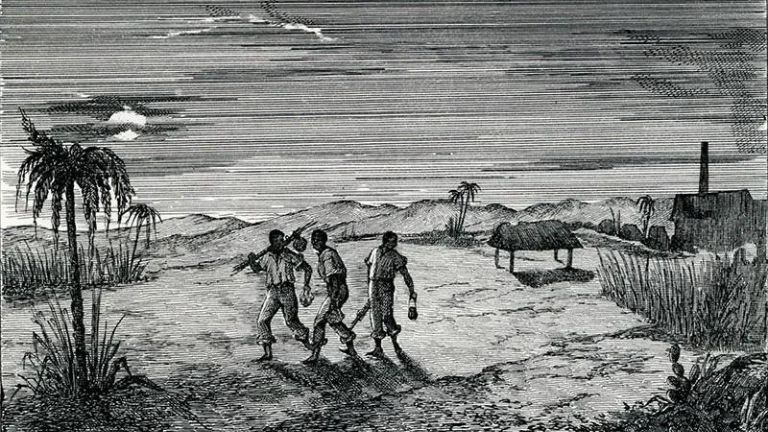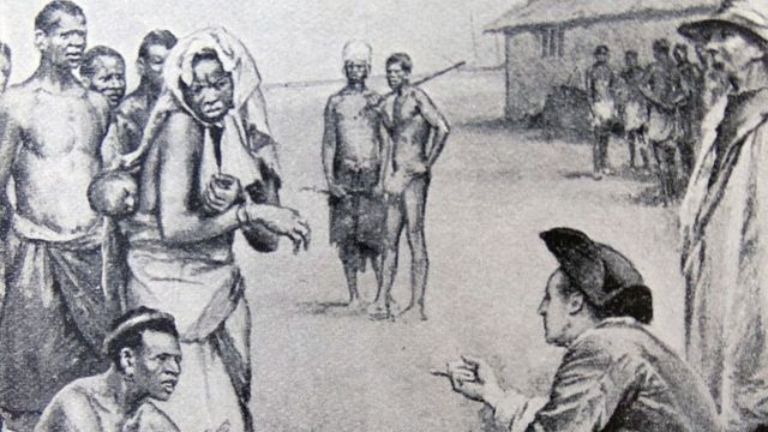Introduction: The slaves’ quest for freedom
The story of marronage and the Maroons is one of courage, resilience and the relentless quest for freedom. During the dark days of slavery, many slaves escaped from the plantations, finding refuge in isolated communities known as Maroons. These communities, often located in remote areas such as mountains, forests or swamps, were the cradle of unique cultures and fierce resistance against oppression.

1. Marronage: a struggle for freedom
Marronage was an act of defiance against the slave system. The slaves who embarked on this adventure risked their lives, but the prospect of freedom motivated them to overcome all obstacles. These courageous men and women braved the dangers of slave patrols, wild animals and hostile weather conditions to free themselves from the chains of slavery.
1.1 The different forms of marronage
Marronage took different forms depending on circumstances and regions. Some slaves fled individually, seeking refuge in isolated places. Others formed organized and resilient maroon communities, where they could live according to their own laws and traditions. Collective marronnage also created bonds of solidarity between fugitive slaves and strengthened their resistance to oppressive forces.
1.2 Maroon survival techniques
The Maroons developed remarkable survival skills and techniques to ensure their subsistence in hostile environments. They mastered the art of hunting, fishing and growing their own food. Their intimate knowledge of nature enabled them to move discreetly, avoid patrols and hide in inaccessible places. Some Maroons were also experts in the art of guerrilla warfare, using their knowledge of the terrain to carry out surprise attacks on plantations and resist their oppressors.

2. The Maroons: a culture of resistance
The Maroons didn’t just hide and survive in remote areas. They created vibrant communities and preserved their cultural traditions, becoming a living symbol of resistance against slavery.
2.1 Social and political organization
The Maroons had a well-established social and political organization within their communities. They often elected chiefs or leaders who were responsible for decision-making and conflict resolution. These leaders were often respected and charismatic figures, capable of maintaining cohesion and unity among the Maroons.
2.2 The preservation of cultural traditions
The Maroons preserved their cultural traditions, including language, dance, music and religious rituals. These artistic expressions served to reinforce their common identity and pass on their history and resistance to future generations. Rhythmic dances and haunting songs were often accompanied by percussion instruments made from natural materials, testifying to the creativity and resilience of the Maroons.

3. Maroon heritage
The history of marronage and the Maroons has left an enduring legacy that transcends borders and eras. Their struggle for freedom and resistance to oppression have inspired liberation movements around the world.
3.1 Influence on the abolition of slavery
The existence of Maroon communities brought to light the horrors of slavery and contributed to raising public awareness. The stories of escaped Maroons helped raise awareness and strengthen the abolitionist movement. Their struggle played a crucial role in challenging the very foundations of slavery, and ultimately led to its abolition in many parts of the world.
3.2 Cultural influence and identity
The Maroons also left a deep imprint on the cultures and identities of the regions where they lived. Their traditions, stories and heritage were woven into the cultural fabric of local communities, enriching cultural diversity. Today, many descendants of the Maroons proudly claim their heritage and continue to celebrate their traditions and roots.

Conclusion: The resilience of the Maroons
Marronage and the history of the Maroons are vibrant testimonies to human resilience and the universal quest for freedom. These courageous men and women defied the constraints of slavery to build resilient communities of solidarity. Their legacy continues to inspire us today, reminding us of the importance of freedom, resistance and the preservation of our traditions.
See also our article: Les Femmes Marron des Antilles










